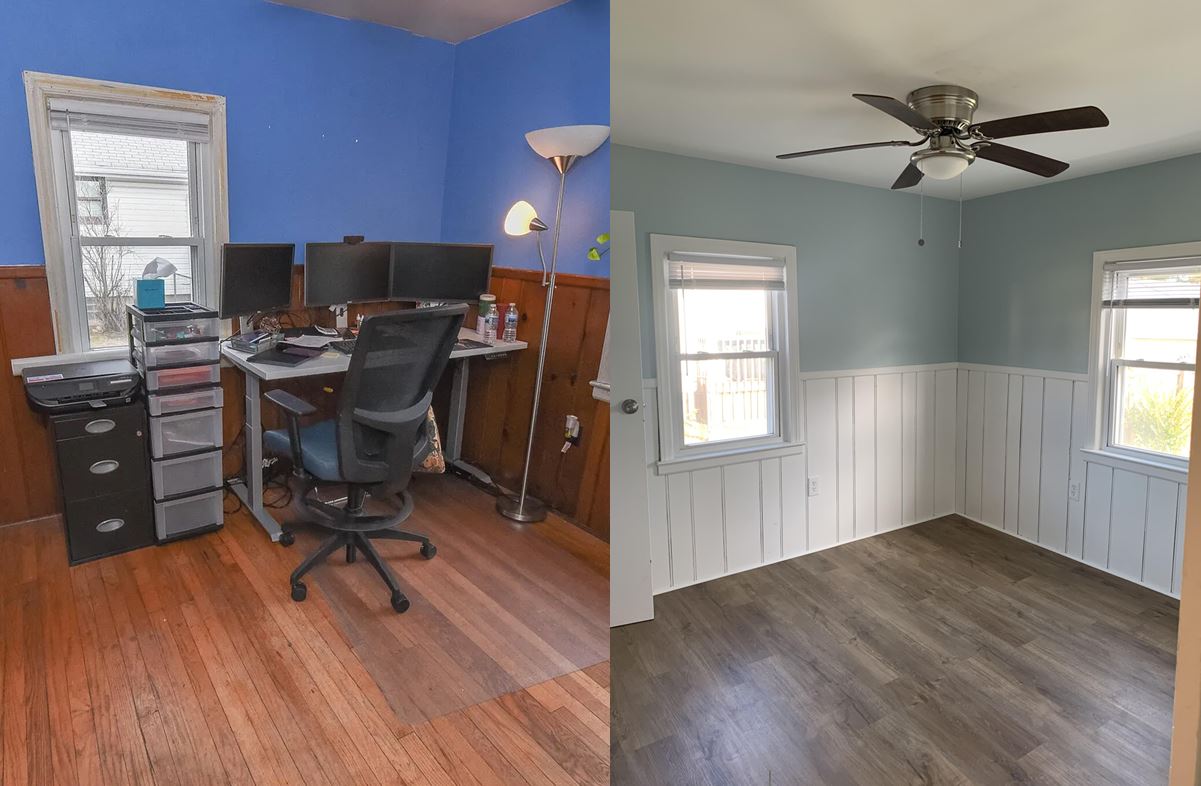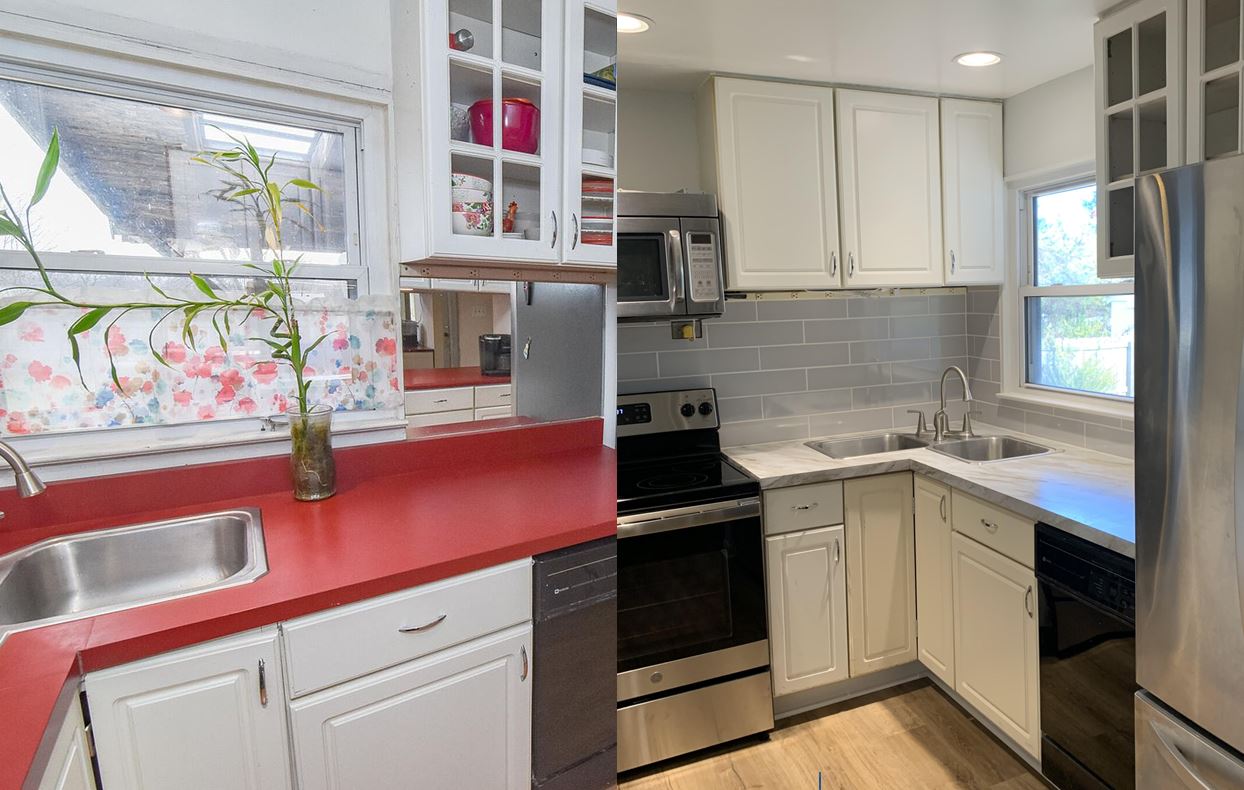In the last real estate article, I discussed why I decided I wanted to buy a rental house. In this article, I’ll talk about my experience finding, buying, renovating, and renting my first investment property.

Running Numbers
My first step in this process was to get in the habit of checking Zillow and the other common real estate websites several days per week. I practiced setting up filters to look only in the specific areas I was interested in and only at the houses in the price range I wanted. I tried to make it a routine to do a preliminary run of the numbers on a house or two each day to see what kind of cash-on-cash return I thought it would give.
I would also look at houses available for rent on Zillow and on Apartments.com and other common sites, and write down a couple every day in a spreadsheet. This helped me get a database together of what properties were renting for, based on location, number of bedrooms, square footage, etc. This helped improve my rental analysis of the houses that were for sale.
I considered these two activities to be necessary steps in getting to know my market. They should allow me to tell if a house is a good deal or not, as well as how much money it might make sense to offer on it. Michael Zuber with One Rental at a Time always talks about how important this stage is, and I found it to be instrumental.
In the meantime, I also double checked that my credit score was up to snuff, and got preapproved for a mortgage from a lender.
Finding & Buying the House

The next step was finding a real estate agent and starting to go look at some houses. I’d always heard it repeated on podcasts and books that it’s a good idea to find an agent who owns some rental properties themselves. They’ll know a little more about what you’re looking for in a property, and can even offer some advice.
I went to the BiggerPockets agent finder and looked in my area. I called a few of them, and ended up working with Jessica Kirkpatrick. She owns a small apartment unit and was a great help. I would recommend her if you’re in the greater Cincinnati area, and will call her again if I’m ever looking for another rental.
Next, it was time to start making offers on properties. The general idea I tried to have in mind is that every house is a good deal at a certain price, so why not try and put in the offer at that price? Of course I didn’t offer on absolutely everything, since I wanted my first property to be a good one, and I didn’t want my new realtor to get sick of me immediately.
I always hear you should expect to make something like ten or more offers before you get one accepted. However, I ended up getting acceptance on the second house I offered on! Such quick success might mean that I was too generous with my offers, but I still think I got a pretty good deal. Note that this was in early 2021 when interest rates were still pretty low, and although housing prices seemed high then, they’ve gone even higher now.
Closing was straightforward and smooth, and I got the house in March 2021.
Renovating and Renting

This house was a 3 bed 2 bath and about 1400 square feet. It was in reasonably good condition, but had some work to be done. It had a few electrical issues, a bad back porch roof, an old air conditioning unit, and needed new counters, paint, and flooring. So it would be a significant amount of work, but every issue was pretty straightforward, and nothing was too major on its own.
Everything I listen to and read says to expect a fair few things to go wrong on your first deal, and then know that they’ll get better, on average, with each one that you do. Considering that, I made a predicted renovation budget for 3 scenarios: the case where everything goes right, the case where everything goes wrong, and what I actually thought it would end up costing.
My best case scenario was about $20,000 in renovations, my worst case was $50,000, and my best-guess prediction was $30,000. I made sure that I thought this property would still be cash-flow positive even in my worst-case renovation scenario (even though the cash-on-cash return becomes less appealing then). I estimated that this sort of renovation would take an experienced investor 2-3 months to complete, so I thought I could do it in about 4-6 months. Note that these renovation costs included all predicted holding costs for whatever time I had the house prior to renting it.
I initially planned to do a lot of the work myself, but as soon as I got started working on it, I realized this was a bit of a fantasy. We had a 1 year old daughter at the time, and the most I could usually work on the rental was in the late evenings once or twice during the week, and on the weekends when we didn’t have interfering plans.
This was not a whole lot of average hours per week for getting this renovation done in a timely manner. And even though the hours per week were low, it was a big strain on my and my family’s schedule to put those hours in.
As a quick side note, I absolutely hated having to mow two yards through the spring and early summer. It was tough to find time that I was free and the weather was cooperating. I felt like I was spending a large portion of my limited renovation time on mowing.
Eventually, I ended up hiring out most major tasks, and acted as the general contractor for the project. The only major task I did “by myself” was installing the LVP flooring, which included a very long weekend of help from my dad.
Slow progress was being made, though, and the place was steadily looking better.
The Results

With only working probably an average of 10-15 hours a week on this renovation, and running behind in a few areas, the project ended up taking 8 months, and involved a lot more stress than I anticipated. Nothing went wrong in any major ways. Things were just tough with my schedule and seemed to drag on and on.
After that, I listed the property on Zillow and starting showing it to potential renters. I stayed strict with my tenant criteria, and it ended up taking a little over a month to get it rented.
With hiring out more work than expected, and with a significantly longer holding period than expected, the total renovation costs ended up right around $40,000. This was right in between my predicted costs and my worst-case costs.
Despite being a bit over budget, this still left the house as a nice first investment property, and I think it worked out well financially. We will see how well it pans out as time goes on!
Conclusions and Future Plans
As I’m sure you can tell from the previous section, I didn’t enjoy the renovation process with this project as much as I expected. When it drug on an extra 4-5 months from what I intended, I really got tired of dealing with it. It burned me out from wanting to do any home renovation projects on our own home, and left me feeling stressed.
Now that it’s rented, things are much, much easier, and I don’t regret buying the property. However, it definitely scared me off from doing another one anytime soon. Unless there’s some opportunity that’s too good to pass up, I don’t plan on getting another investment property until all kids are in school, and I won’t be in any rush to get another one then. We’ll see if I stick to that resolution as I get further removed from this project, but it’s my conclusion for now.
If anyone reading this has or has had investment properties, how did your first one go? Let me know, and thanks for reading!